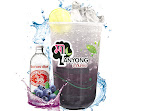ភ្នំពេញៈ កាតឥណទាន ជាកាតប្លាស្ទិកតូចមួយ ដែលចេញ ដោយក្រុមហ៊ុនហិរញ្ញវត្ថុ ជាពិសេសធនាគារ ដល់អ្នកប្រើប្រាស់ ដើម្បីឲ្យអ្នកទាំងនោះ អាចទិញទំនិញ និងសេវាកម្ម នៅកន្លែងណាមួយ។ កាតនេះ ប្រៀបដូចជាកាតឥណទានបង្វិល ដែលការខ្ចីត្រូវមានដែនកំណត់។
ម្ចាស់កាតមិនចាំបាច់ត្រូវបង់ប្រាក់ជំពាក់ទាំងអស់ឡើយ ហើយជាធម្មតា ម្ចាស់កាត តម្រូវឲ្យបង់ប្រាក់អប្បបរមាជារៀងរាល់ខែ ហើយអ្នកទាំងនោះ អាចខ្ចីឡើងវិញ ដរាបណាពួកគេ ស្ថិតក្នុងដែនកំណត់ឥណទានមុនពេលមានកិច្ចព្រមព្រៀងគ្នា។
ជាធម្មតា គ្រឹះស្ថានដែលបានចេញកាតនេះគិតថ្លៃកាត និងអត្រាការប្រាក់ជារៀងរាល់ឆ្នាំ ដោយផ្អែកលើបរិមាណប្រាក់ដែលអ្នកខ្ចី បានខ្ចី ជាទូទៅគឺក្រោយពេលទិញទំនិញ ឬប្រើប្រាស់សេវាកម្មណាមួយ។
ចំពោះអ្នកប្រើប្រាស់កាតឥណទាន អត្ថប្រយោជន៍សំខាន់ដែលអ្នកទាំងនោះទទួលបាន គឺងាយស្រួល អាចឲ្យពួកគេទិញទំនិញ និងសេវាកម្ម នៅគ្រប់ទីកន្លែង និងគ្រប់ពេលដែលពួកគេចង់។ កាតឥណទាន មានប្រើប្រាស់នៅ៣០លានកន្លែង ក្នុងប្រទេសចំនួន ១៧០ លើសកលលោក។
ប្រតិបត្តិការទូទាត់ទំនិញដោយប្រើប្រាស់កាតឥណទាន ដែលជាធម្មតា មិនសូវមានសុវត្ថិភាពនោះ ប៉ុន្តែការប្រើប្រាស់កាតឥណទានធ្វើឲ្យអ្នកមិនចាំចាច់ដាក់លុយ ច្រើនតាមខ្លួននោះទេ។
អ្នកប្រើប្រាស់កាតឥណទាន មានរយៈពេលជាក់លាក់ ពោលពេលវេលាដែលត្រូវទូទាត់ទាំងអស់មុនពេលគិតអត្រាការប្រាក់។ រយៈពេលជាក់លាក់ គឺឥណទានគ្មានការប្រាក់ ដែលអាចមានរយៈពេលពី១៥ ទៅ ៦០ថ្ងៃ។
អត្ថប្រយោជន៍បន្ថែមទៀត គឺការរក្សាកំណត់ត្រា និងតាមដានការទិញទំនិញបានត្រឹមត្រូវ ដូចជា ការប្រើប្រាស់សេវាអ៊ីនធឺណិត និងទូរស័ព្ទ និងសក្តានុពលដែលអាចរក្សាទុកការទូទាត់ សម្រាប់ទំនិញដែលមានបញ្ហា។ កាតមួយចំនួន មានកម្មវិធីផ្តល់រង្វាន់ និងការបញ្ចុះតម្លៃលើការទិញទំនិញ។
គុណវិបត្តិធំនៃការប្រើប្រាស់កាតឥណទាន គឺអត្រាការប្រាក់ ឬហៅម្យ៉ាងទៀតថា អត្រាភាគរយប្រចាំឆ្នាំ (APR)។ អត្រានេះ គិតចំពោះសមតុល្យទឹកប្រាក់ដែលហួសកាលបរិច្ឆេទជាក់លាក់។
អត្រាការប្រាក់ទាំងនោះ មិនមានការគ្រប់គ្រងច្បាស់លាស់ឡើយនៅក្នុងប្រទេសភាគច្រើន ហើយអាចខុសគ្នាពី ១០ ទៅ ៧៩,៩ភាគរយ។ អត្រាខ្ពស់បំផុតនេះ ត្រូវបានគិតដោយធនាគារ First Premier Bank នៅសហរដ្ឋអាមេរិក។ ក្រៅពីគ្មានបទប្បញ្ញត្តិច្បាស់លាស់ហើយនោះ ការប្រើប្រាស់កាតឥណទាន ប្រឈមនឹងការឆបោកខ្ពស់។
ក្រៅពីថ្លៃប្រចាំឆ្នាំ អ្នកចេញកាតឥណទាន នឹងគិតថ្លៃសេវាបង់ប្រាក់យឺតយ៉ាវ និងថ្លៃប្រើប្រាស់លើសចំនួនកំណត់។
ការប្រើប្រាស់កាតឥណទាន តម្រូវឲ្យមានវិន័យច្បាស់លាស់ដើម្បីចៀសវាងការធ្លាក់ចូលទៅ ក្នុងការជំពាក់បំណុលច្រើន និងយូរអង្វែង ដែលនេះជាបញ្ហាធ្ងន់ធ្ងរកើតមាននៅក្នុងប្រទេសជាច្រើន។ នៅសហរដ្ឋអាមេរិក បំណុលជាមធ្យមបណ្តាលមកពីការប្រើប្រាស់កាតឥណទាន ក្នុងគ្រួសារមួយ ដែលមានបំណុលកាតឥណទាន ១៥ ៨០០ដុល្លារ។
កម្ពុជាបានដាក់ឲ្យប្រើប្រាស់កាតឥណទាននៅឆ្នាំ២០០១។ កាតឥណទាន មានចេញដោយធនាគារជាច្រើន ហើយជាទូទៅមានសុវត្ថិភាព ដោយអ្នកប្រើប្រាស់កាតដាក់វត្ថុបញ្ចាំមានកំណត់សម្រាប់ការ ប្រើប្រាស់កាតនោះ ហើយជាធម្មតាវត្ថុបញ្ចាំនោះត្រូវមានតម្លៃដល់១១០ភាគរយ។
អ្វីដែលសំខាន់នោះ គឺធនាគារ នឹងគិតអត្រាការប្រាក់ ពី ២ ទៅ ៣ដង ចំពោះកម្ចី ដែលអ្នកកាន់កាតឥណទានត្រូវសងវិញ។ ម្យ៉ាងវិញទៀត ធនាគារក៏ទទួលបានការប្រាក់ពេលដាក់ប្រាក់បញ្ញើ កម្រៃជើងសា និងថ្លៃផ្លាស់ប្តូរសេវាកម្មផងដែរ ដោយអ្នកលក់ព្យាយាមផ្តល់កាតនោះ ទៅឲ្យអ្នកប្រើដោយគិតថ្លៃសេវាលើស។
ទីផ្សារកម្ពុជា កំពុងស្ថិតក្រោមការអភិវឌ្ឍ ដោយមានអ្នកប្រើប្រាស់កាតតិចតួច។ ម្យ៉ាងវិញទៀត បញ្ហានេះ បណ្តាលមកពី អត្ថប្រយោជន៍ និងកម្មវិធីផ្តល់រង្វាន់តិចតួច ខ្វះការប្រកួតប្រជែងលើអត្រា និងថ្លៃសេវា និងកម្រមានការបញ្ចុះតម្លៃពីអ្នកលក់។ បើតាមការរំពឹងទុក បញ្ហាទាំងនេះ នឹងមានការផ្លាស់ប្តូរ។
ការប្រើប្រាស់កាតឥណទានក្នុងចំណោមប្រជាជនជាច្រើន បានកើនឡើង ដោយសារធនាគារមានទំនុកចិត្តកាន់តែច្រើនចំពោះហានិភ័យទីផ្សារ ហើយការប្រកួតប្រជែងក៏មានខ្លាំងដែរ៕
2. Account number. Visa account numbers always start with the number “4″ and are 16-digit long. The numbers must appear in one line and be clear and uniform in size and spacing.
3. BIN number. The first four digits of the account number must be printed directly below it. This is the issuer’s Bank Identification Number (BIN). These two numbers must be identical.
4. Member since. Some Visa cards display the month and year in which the account was open.
5. Expiration date. The expiration date should be located below the account number and be in the format “mm/yy.” Expired cards are invalid and should not be accepted.
6. Cardholder name. The cardholder name or a generic title may be printed or embossed on the card, however on some Visa cards the field may be blank.
8. Dove hologram. The Visa dove hologram can be placed anywhere on the front or back of the card. This three-dimensional image should appear to move as you rotate or tilt the card.
9. Vertical orientation. Some Visa cards are vertically oriented and the account information is laser-printed, not embossed. These cards have magnetic stripes and a card verification code on the back, just as their more conventional counterparts.
10. Mini-card. This is a miniature version of a standard Visa Card or Visa Electron Card.
11. Magnetic stripe. The magnetic stripe contains the card account’s identifying information. When the card is swiped through a point-of-sale (POS) terminal, the encoded information is read and displayed on the terminal’s screen. The displayed information should match the one on the card itself.
12. Signature panel. The signature panel must appear on the back of the card, with the word “Visa” printed repeatedly within an ultraviolet element. Depending on the card design, the panel may feature the full account number printed on it, only its last four digits or none at all. If the signature panel is scratched or erased, the word “void” appears underneath repeatedly.
13. Card Verification Value 2 (CVV2). The three-digit CVV2 number appears in a white box either to the right of the signature panel or within it. CVV2 is used in card-not-present transactions to verify that the customer is in possession of the card.
If your inspection of the card leads you to suspect that it may have been altered or tampered with in some way, you will have to make a Code 10 authorization call. You will be transferred to the issuer’s authorization center and be given instructions on how to proceed with the transaction.
The Takeaway
Accepting card payments in a face-to-face setting gives you the huge advantage of being able to physically inspect each card and ensure its validity. Add to that the ability to evaluate your customer’s behavior for signs of anything suspicious or unusual and it becomes obvious why a face-to-face environment is lower-risk than card-not-present one. There is no excuse for not taking advantage of it. Inspecting the security features of a Visa card should only take you a couple of seconds and there is no better way to spend your time while waiting for an authorization response.




























